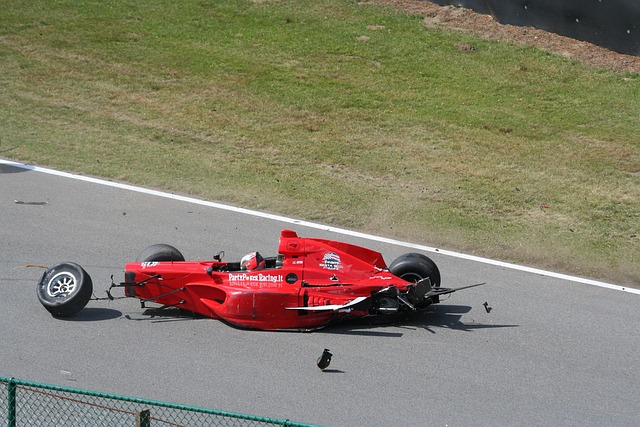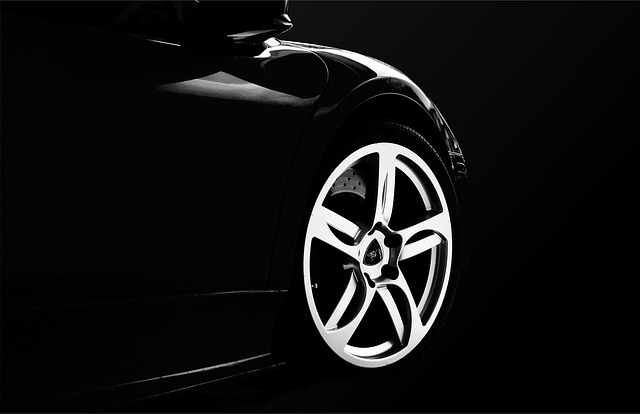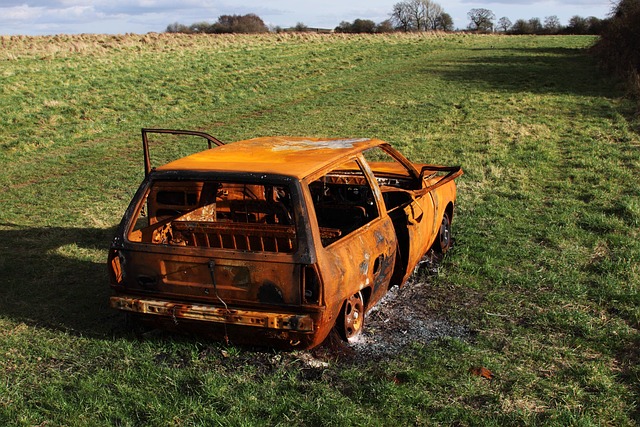Corrosion Protection: Structural vs Cosmetic Repairs for Longevity
Corrosion, a natural but harmful process, weakens structures over time, posing significant risks to…….
Corrosion protection is a vital field of study and practice that focuses on mitigating the detrimental effects of corrosion, ensuring the longevity and integrity of materials and structures worldwide. This comprehensive article aims to guide readers through the intricate world of corrosion protection, exploring its historical roots, global impact, technological innovations, economic implications, and future prospects. By delving into these aspects, we will uncover why corrosion protection is not just a technical concern but a critical component shaping our modern world.
Definition: Corrosion protection refers to the systematic approach and application of strategies, techniques, and materials designed to prevent or slow down the deterioration of metal, alloy, and other material surfaces due to electrochemical reactions, commonly known as corrosion. It involves a multi-faceted process that combines science, engineering, and innovative technologies to safeguard structures, machinery, vehicles, and vital infrastructure.
Core Components: The essence of corrosion protection revolves around three primary components:
Material Selection: Choosing the right materials with inherent corrosion resistance is the foundation. This includes galvanically stable metals like stainless steel, aluminum alloys, and zinc-based coatings, which offer excellent defense against corrosive environments.
Surface Preparation: Proper surface treatment is crucial. Techniques such as cleaning, etching, priming, and coating preparation ensure a clean, smooth surface, enhancing adhesion and barrier protection.
Coating and Barrier Systems: These are external defenses that create a physical or chemical barrier between the material and corrosive agents. Coating technologies include paint, polymers, waxes, and specialized coatings designed for specific environments, each offering varying levels of protection and durability.
Historical Context: The battle against corrosion has been an ongoing struggle since ancient times when humans first encountered the destructive power of rust on iron tools and weapons. Early civilizations developed rudimentary methods to protect metalwork, such as applying oils, greases, and natural resins. However, significant advancements came in the 19th century with the industrial revolution, leading to a deeper understanding of corrosion mechanisms and the development of galvanization techniques for steel structures. The 20th century witnessed an explosion of research, resulting in diverse coating technologies, protective coatings, and specialized chemicals tailored to various corrosive environments.
Significance: Corrosion protection is paramount for several reasons:
Corrosion protection is a universal challenge, affecting every continent and almost every industry. The global impact and trends in this field are diverse and far-reaching:
| Region | Impact and Trends |
|---|---|
| North America | The region leads in corrosion protection innovation, with advanced coating technologies and specialized protective systems. Industries like aerospace and automotive drive demand for high-performance materials. |
| Europe | Known for stringent environmental regulations, Europe focuses on eco-friendly corrosion protection solutions, promoting water-based and low-VOC coatings. |
| Asia Pacific | Rapid industrialization drives the need for corrosion protection in infrastructure development and manufacturing. Countries like China and India are significant players in both market demand and technological advancements. |
| Middle East & Africa | Corrosive environments due to high temperatures and humidity pose unique challenges. The region witnesses substantial investment in protective coatings for offshore structures and power generation equipment. |
| Latin America | Growing industries, particularly in mining and oil & gas, fuel demand for corrosion-resistant materials and technologies. |
Key Global Trends:
The economic implications of corrosion protection are significant, impacting various sectors and influencing global markets:
Market Dynamics:
Investment Patterns:
Economic Impact:
The field of corrosion protection has witnessed remarkable technological progress, driving innovation and opening new avenues for effective protection:
1. Nanotechnology:
2. Smart Coatings:
3. Digital Imaging and Modeling:
4. Eco-Friendly Alternatives:
Governments and international bodies play a crucial role in shaping the landscape of corrosion protection through policies, regulations, and standards:
Key Policies and Regulations:
Legislative Frameworks:
Impact on Development: These policies and standards drive innovation, ensuring that corrosion protection technologies meet specific performance criteria, safety standards, and environmental sustainability goals. They also foster a culture of responsibility and accountability in the industry.
Despite significant achievements, the field of corrosion protection faces several challenges and criticisms that require focused attention and innovative solutions:
Main Challenges:
Proposed Solutions:
Case Study 1: The Golden Gate Bridge – A Corrosion Protection Marvel
The iconic Golden Gate Bridge in San Francisco, California, stands as a testament to effective corrosion protection. This engineering marvel, completed in 1937, has withstood the harsh marine environment for decades. The bridge’s longevity is attributed to a multi-layered protective system:
Case Study 2: Eco-Friendly Coating in Marine Applications
A leading marine manufacturing company, GreenShip Technologies, has developed an eco-friendly coating system for boat hulls, reducing environmental impact while providing superior protection. Their innovative product, BioHull, utilizes a bio-inspired formula with natural extractions to repel marine organisms and prevent biofouling. This technology offers several advantages:
Case Study 3: Predictive Maintenance in Oil & Gas
An international oil and gas company, EnergyCorp, implemented a predictive maintenance system using IoT sensors to monitor corrosion rates in offshore pipelines. This real-time data collection enabled them to:
The future of corrosion protection is filled with promising possibilities, driven by technological advancements, growing demand, and evolving global trends:
Emerging Trends:
Growth Areas:
Strategic Considerations:
Corrosion protection is not merely a technical concern but a critical enabler of modern society’s progress and sustainability. Its significance spans across industries, economies, and the environment, shaping our infrastructure, assets, and future prospects. From ancient civilizations’ rudimentary efforts to today’s advanced technological innovations, the field has evolved exponentially.
As we look ahead, corrosion protection stands at the forefront of global challenges and opportunities. The world continues to rely on its expertise to safeguard critical infrastructure, ensure industrial efficiency, and promote environmental stewardship. By embracing new technologies, fostering collaboration, and prioritizing sustainability, the field can overcome current challenges and shape a brighter future.
Q: What are the common causes of corrosion?
A: Corrosion is primarily caused by electrochemical reactions between metals or alloys and their surrounding environment. Key factors include moisture, oxygen, certain chemicals (acids, bases), and temperature variations.
Q: How do I choose the right protective coating for my structure?
A: Selection depends on various factors, including the type of material, environmental conditions, desired protection level, and maintenance requirements. Consult industry experts and consider factors like corrosion resistance, adhesion, flexibility, and environmental impact.
Q: Are there any regulations specific to corrosion protection in the construction industry?
A: Yes, many countries have regulations mandating the use of corrosion-resistant materials in critical infrastructure. For example, ISO 15482 provides standards for protective coatings used in construction. Local building codes and industry associations also offer guidelines.
Q: Can corrosion protection technologies be eco-friendly?
A: Absolutely! Many advanced coating systems are being developed with environmental sustainability in mind. Bio-inspired materials, water-based coatings, and biodegradable alternatives are examples of eco-friendly corrosion protection options.
Q: How does digital imaging improve corrosion protection?
A: Digital imaging techniques enable precise surface analysis, allowing for more accurate coating application. 3D scanning and CAD help create detailed models, while CFD simulations predict corrosion behavior, ensuring optimized protective systems.

Corrosion, a natural but harmful process, weakens structures over time, posing significant risks to…….

Corrosion, accelerated by harsh weather and moisture/chemical exposure, poses significant risks to s…….

Corrosion, accelerated by environmental factors, damages vehicle structures and aesthetics post-coll…….

Corrosion, driven by metal-environment interactions, can severely damage auto detailing and repair m…….

Corrosion, a natural metal degradation process caused by water and oxygen reactions, poses significa…….